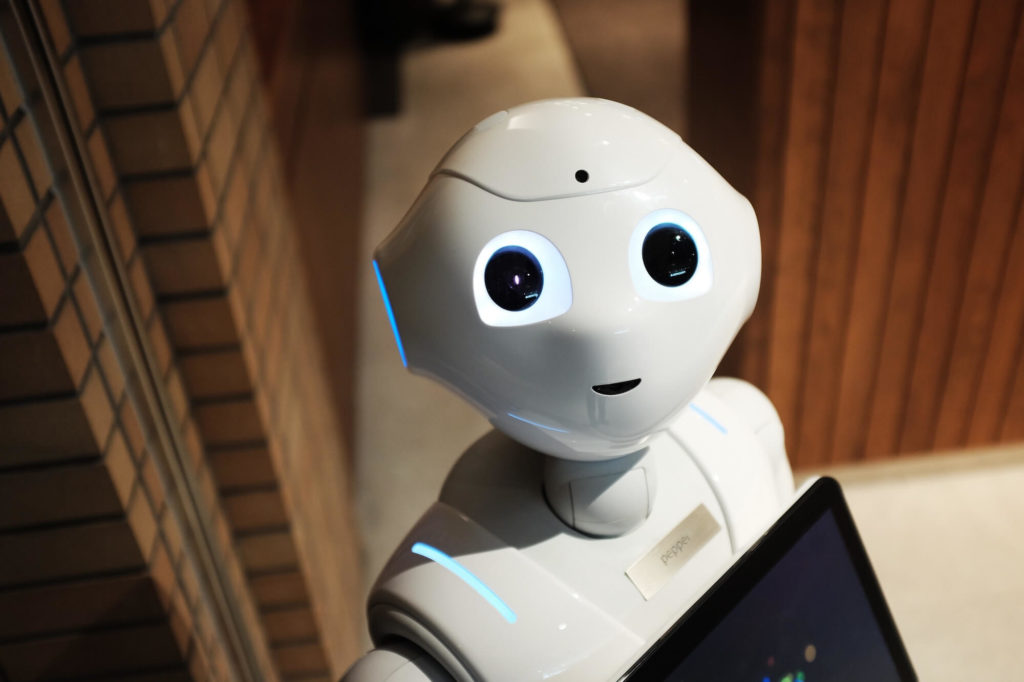Transforming Change Management with Artificial Intelligence (AI)
Change may be inevitable but technological advances also change its nature.

“Change is inevitable – except from vending machines” – Robert C Gallagher. I am sure, like me, you smiled ruefully when you read that quote. But, when you reflect further, you will also realise that it highlights an important truth. Change may be inevitable but technological advances not only inevitably result in further change, but also change the nature of change. Perhaps, more than anywhere else, this is the case with Artificial Intelligence (AI) and we need to consider its impact on the people side of change which is likely to be significant. We will certainly make our lives more difficult if we don’t address this increasingly important field and anticipate problems we don’t know about yet.
What is AI, actually?
To support our understanding of what AI actually is, I offer the following definition promoted by Stanford University, who in turn reference Nils J. Nilsson:
“Artificial intelligence is that activity devoted to making machines intelligent, and intelligence is that quality that enables an entity to function appropriately and with foresight in its environment.”
Not receiving change from a vending machine may be annoying, but in an increasingly cashless society it is no longer relevant. You see this, for example, in the world of travel where intelligent technology has removed the need to reach into the depths of your pockets or bags, desperately searching for the correct change (or the correct currency) to purchase a ticket, whether from a barricaded human or, more recently a vending machine. Today you simply reach for your smart device (an advanced machine if you will) that knows who you are, where you are, what are looking for, how to pay for it etc. Technology offers intelligent solutions that focus on answering questions and solving problems. The ‘smart’ tagline is generously applied to everything from lights to doors, phones, and even cars.
AI and change management
Either way the relevance of AI to the world of change management is self-evident. Change management practitioners, always focused on the people side of change, will have their work cut out for them when it comes to AI.
You also need to consider the extent to which AI can be used to increase the efficiency of the change management discipline. It is increasingly evident that organisational leaders are limiting AI as a topic and project managers are utilising AI to create opportunities to find new ways to tackle old problems rather than for new ways and new opportunities. So, we need to be keeping pace to remain meaningful and relevant, and to keep up with the velocity of and dynamics of digital change, where digital projects offer numerous transformational opportunities on a daily basis.

Imagine for a moment, a robot (or ‘bot’ as they are now known), as the all-knowing, all seeing colleague, picking out invaluable information from the wealth of data generated through change management activities. The ‘change bot’ if you will, could identify areas of change management that are at risk both from within its own activities, or from those of the leaders, sponsors or other projects, even before they happen. The bot could intelligently scan meetings, emails, chats, documents etc., to ensure that they support the rationale for the change, reinforce the key messages behind the change, and flag any deliverable, reference, task, issue or risk raised that jeopardises the change. Furthermore, there is little chance of bias because any warning or issue raised is based upon algorithms representative of observed criteria. AI simply holds up a mirror to the organisation that says, “You must correct this.”
Actually, AI offers you a new paradigm with even more potential leverage. The possibility of running AI assessments of all digitised activities, 24/7, 365 days a year, could enable you to operate more proactively. Instead of taking corrective action based on historic data, you could now intervene according to predictive data. Taking this one step further, the ‘change bot’ could even take the corrective action and only inform you of what it has done. All this will help to not only ensure that your change management activities keep pace with what is needed but speed up the delivery of change and help you optimize the ROI of the initiative.
Endless possibilities
The applicability of this technology is boundless. When considering corporate failures (the recent failure of a leading UK construction company springs to mind), this seems like an essential. After all, no corporation has ever failed without there being warning signs beforehand. It is just that these signs have been missed, glossed over or simply ignored; often precisely because of personal bias.
In this introduction, we have only just begun to scratch the surface of AI, and the implications for the people side of change. The potential to gain competitive advantage through applying AI to change management should appeal to all leaders and not just change managers. However, it offers a real opportunity to adopt and live up to the mantra inspired by Antoine de St Exupery:
“As for the future… ours is not to foresee it, but to enable it.”
Future articles on this and Change theme will empower you do so and help you address the impact of AI on your organisational culture and values. In addition, we hope to share some thoughts on how to manage the introduction of AI, and how we, as the change management community, can anticipate and manage the almost-certain resistance to AI, and convert this into positive acceptance as its advance continues and its benefits are felt.